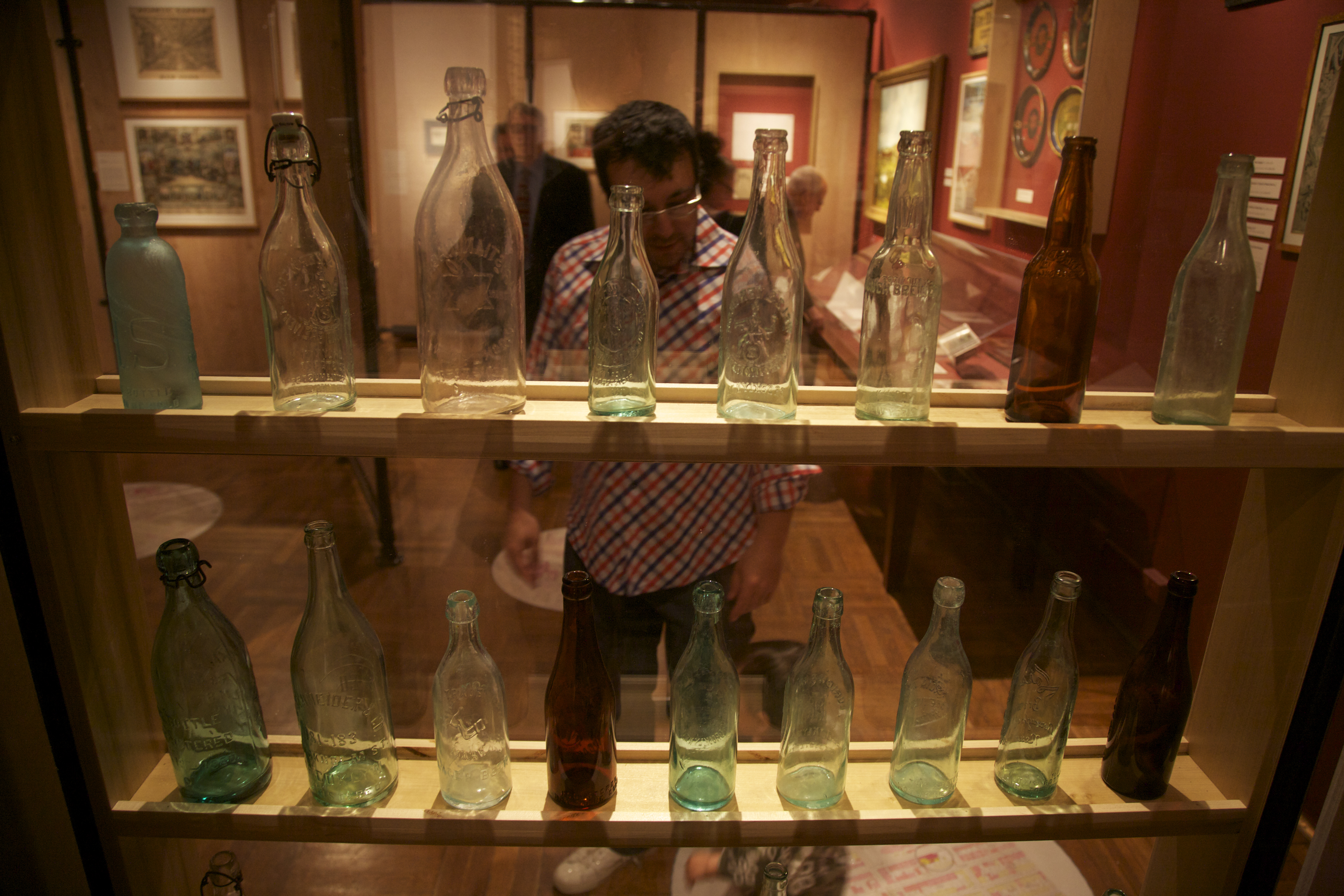How energy innovation made American beer more delicious


America is a land where strangers become natives, and cultures blend together. New York's German immigrants taught ale drinkers how to love lager beer, and with its introduction, a demand for energy and new technology arose.
A major difference between brewing ale and brewing lager beer is the amount of refrigeration that's involved; lagers ferment at relatively cooler temperatures. German immigrants began to arrive in earnest during the mid 1800's, and need a way to cool their drafts.
Ice, hauled in from upstate, was initially the lone solution. Blocks were stored in insulated "ice houses" and then floated downriver for distribution. Ice became less desirable over time as greater volumes of beer were brewed and water became fouled by pollution.
Last week, I caught a glimpse of some of the tools that were used to extract the ice and learned about the history of the city's breweries at the New-York Historical Society's "Beer Here" exhibition. The Historical Society showcased innovations in advertising and automation, but didn't specifically key in on energy.
Thankfully, Curator Debra Bach was able to assist with researching the role that energy played in nascent brewing business and how technology breakthroughs made possible the mass production of beer.
Steam engines powered a lot of the brewing process, and made automation possible Bach said. The architecture of building had to change to accommodate the new heavy machinery. Mechanical refrigeration played a significant role, and entered a boom phase during the 1859-1880's, Bach noted.
The first example of brewery that used refrigeration extensively was S. Liebmann's (later Rheingold), which began using an absorption machine in 1870. Absorption machines require a heat source to provide energy for cooling.
Technology breakthroughs, including mechanical refrigeration, were showcased at the United States Centennial in Philadelphia six years later, where there was a hall dedicated to brewing. An entrepreneur named John C. De La Vergne's founded a refrigeration company in 1880, which brought ammonia-based cooling system into the mainstream. Its system was widely used by 1890, Bach said.
John C. De La Vergne's refrigeration company brought the technology into the mainstream with an ammonia-based cooling system. Its system was widely used by 1890, Bach said. Beer magnate Jacob Ruppert eventually acquired the business, and his beer went a long way to establish the New York Yankee's baseball franchise and build Yankee Stadium.
Meat packers and the railroads followed suit in the ensuing decades, but it was the industrious German immigrants' love of beer that hastened the adoption of mechanical refrigeration and accompanying increased energy consumption.
Today's brewers and spirits makers face the challenge of controlling their energy costs, and are among the earliest adopters of renewable power sources. Who would have thought how interrelated beer and energy really are?
(Image credits: New York Historical Society)
Related on SmartPlanet:
- Scots to blend whiskey with tidal power
- Brewers exploit the energy potential of beer
- A toast to renewable power: it's making the sustainable cocktail
- Coming soon, commercial scale rooftop produce
This post was originally published on Smartplanet.com